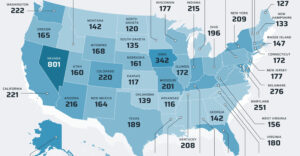Retailers face a challenging environment in 2023 as global economic growth slows and the U.S. remains at risk of recession. At the same time, fraud against retailers continues to rise.
The combination of slow spending growth and increased fraud threats to revenue and customer relationships requires retailers to adjust their fraud prevention strategies. The goal should be to combat fraud — especially friendly fraud and policy abuse — without eroding revenue by turning off good customers who may be shopping less often and spending less per order.
E-commerce retailers, in particular, face a rising trend line of fraud. Juniper Research projects that global e-commerce losses will top $48 billion worldwide by the end of 2023, up from $41 billion in 2022. Juniper also predicts that from 2023 to 2027, global online commerce fraud losses will top $343 billion.
Successfully coping with this onslaught of fraud requires understanding how the current fraud landscape differs from the rise in fraud early in the pandemic. It also requires understanding the tactics organized fraudsters are using now and the best ways to counteract them.
Rapidly Evolving Fraud Landscape
While many types of e-commerce fraud are timeless, like account takeovers and card not present fraud, the way criminals approach these strategies is different now from the start of the pandemic. Then, we saw a wave of consumer account credential phishing driven by Covid-related scams, both email and social media.
Now, we see more brand impersonation tactics, including well-designed emails, social media posts, and websites that often look remarkably like legitimate ones. In addition, the ongoing tide of breached personal information keeps flowing to criminals, making it easy for fraudsters armed with botnets to efficiently test and crack passwords to exploit consumer accounts at scale.
To further complicate matters, businesses are struggling to shoulder the cost and workload of fraud prevention. Some are delaying expansion plans and pulling engineering resources into fraud prevention.
The reallocation of retail IT resources for fraud screening is especially concerning because that leaves IT teams less time to address other security concerns, which can increase the risk of a system intrusion or phishing attack that exposes customer data and leads to more fraud.
Cost of Keeping Customers
At the same time, there’s more financial pressure on retailers as consumer spending growth has slowed and consumer expectations for friction-free experiences have increased.
In 2020, according to Salesforce, 80% of consumers said the experience a company provides matters as much as what it sells. In 2022, the percentage increased to 88%. During that same period, the rate of customers who expect companies to anticipate their needs jumped from 56% to 62%.
Those rising consumer expectations track with the results of a 2021 survey of more than 5,000 online shoppers by ClearSale across the U.S., Mexico, Canada, the U.K., and Australia. Most (84%) of those shoppers said they would never shop again on a website where they had a fraud experience, and 40% said they would never shop again on a website that declined their order by mistake.
Retail Fraud Tactics Trending Upward
Retailers who want to avoid losing revenue and having customers defrauded need to understand how fraud is happening now. These are the primary trends affecting retail:
More Account Takeover Fraud
With billions of login credentials available in criminal corners of the internet, and people’s tendency to reuse passwords across websites, a single exposed password can result in multiple account takeover attacks.
Massive Increase in New Account Fraud
Identity fraudsters combine stolen email addresses and other personal data to open merchant and bank accounts that appear to belong to real people. Too often, it’s only when bills go unpaid, or victims report card fraud that retailers realize the new customer never existed.
Buy Now, Pay Later Fraud
BNPL fraudsters often make purchases with stolen credit card numbers. By the time the victim realizes their card is being used and reports it to the retailer or their bank, the criminal and the stolen merchandise are long gone.
Promotions Abuse Is a Growing Problem
Ordinary customers and criminal gangs alike exploit promotions codes and coupons to get more of an item that’s on sale and work around customer limitations.
Promotions abuse is also an in-store problem, with customers who bring in expired coupons and pressure harried cashiers to override the expiration and give them the discount.
Best Fraud Prevention Strategies for Retailers
This list of trending fraud tactics may appear overwhelming, but retailers can improve their fraud prevention with a few best practices.
Avoid Burdening Customers
First, consider the customer experience implications of every part of your fraud control process. It’s critical not to place the burden of fraud control on your customers because you risk losing them. For example, in the five-country online shopper survey, 35% of consumers admitted abandoning an online cart because checkout was too much of a hassle or time-consuming.
Financial and Human Resources
It’s also wise to strengthen your business’s investment in fraud prevention and overall security. At the very least, try to maintain rather than cut back current investments in those areas.
If you must require your IT department or e-commerce team to handle fraud screening in-house, consider that a stopgap measure as you vet providers who can help you outsource that responsibility so that your employees can focus on their core roles. If those teams are away from their primary duties for too long, you risk other security issues and customer dissatisfaction.
Contextual Review With AI
Implement multiple layers of fraud detection and security for orders because most fraudsters know how to get around at least some fraud prevention tactics. Ideally, your fraud solution will combine AI plus contextual review as needed to prevent fraud and avoid declining good customers by mistake. Feeding contextual review results back into the AI system will make it more precise and effective over time.
If promotion abuse is a big problem, make IP address evaluation part of your fraud prevention process. This regimen can help identify users who create multiple email addresses to get around promotion code limits.
To prevent account takeover fraud, screen all orders, even those from longstanding good customers who are signed into their accounts. AI and contextual review can analyze anomalies, such as new locations, devices, or purchasing patterns that may indicate ATO, without frustrating legitimate customers.
Monitor Data Continually
Finally, benchmark, track, and analyze your order data regularly to track order approval rates, fraud prevented, chargebacks, and false declines. Break down this data by channel and device to see where you need to improve fraud prevention and your customer experience. This practice will help your business identify new fraud trends as the economy changes, so you can continue to adapt your prevention strategies to thwart fraud and protect your relationships with your good customers.
















































Social Media
See all Social Media